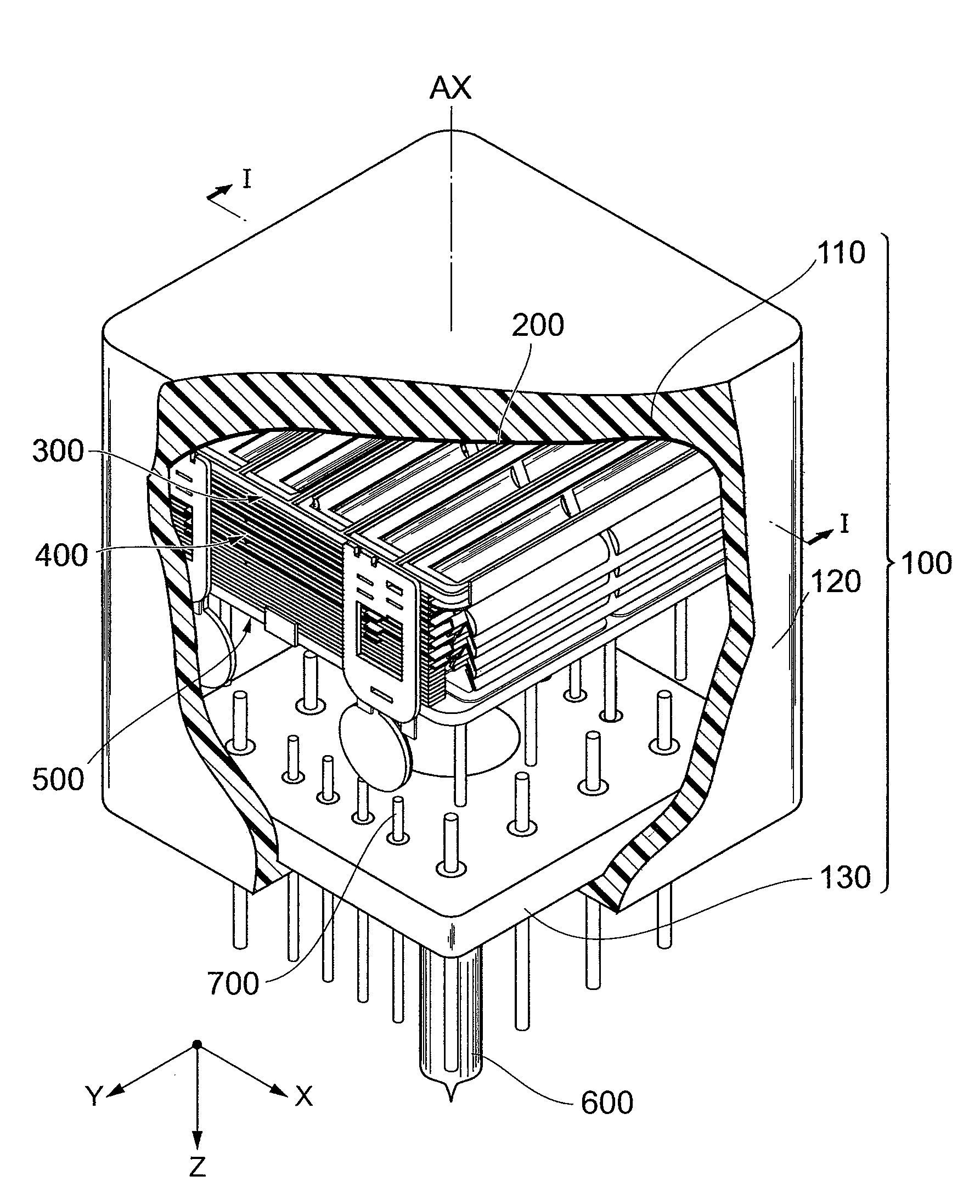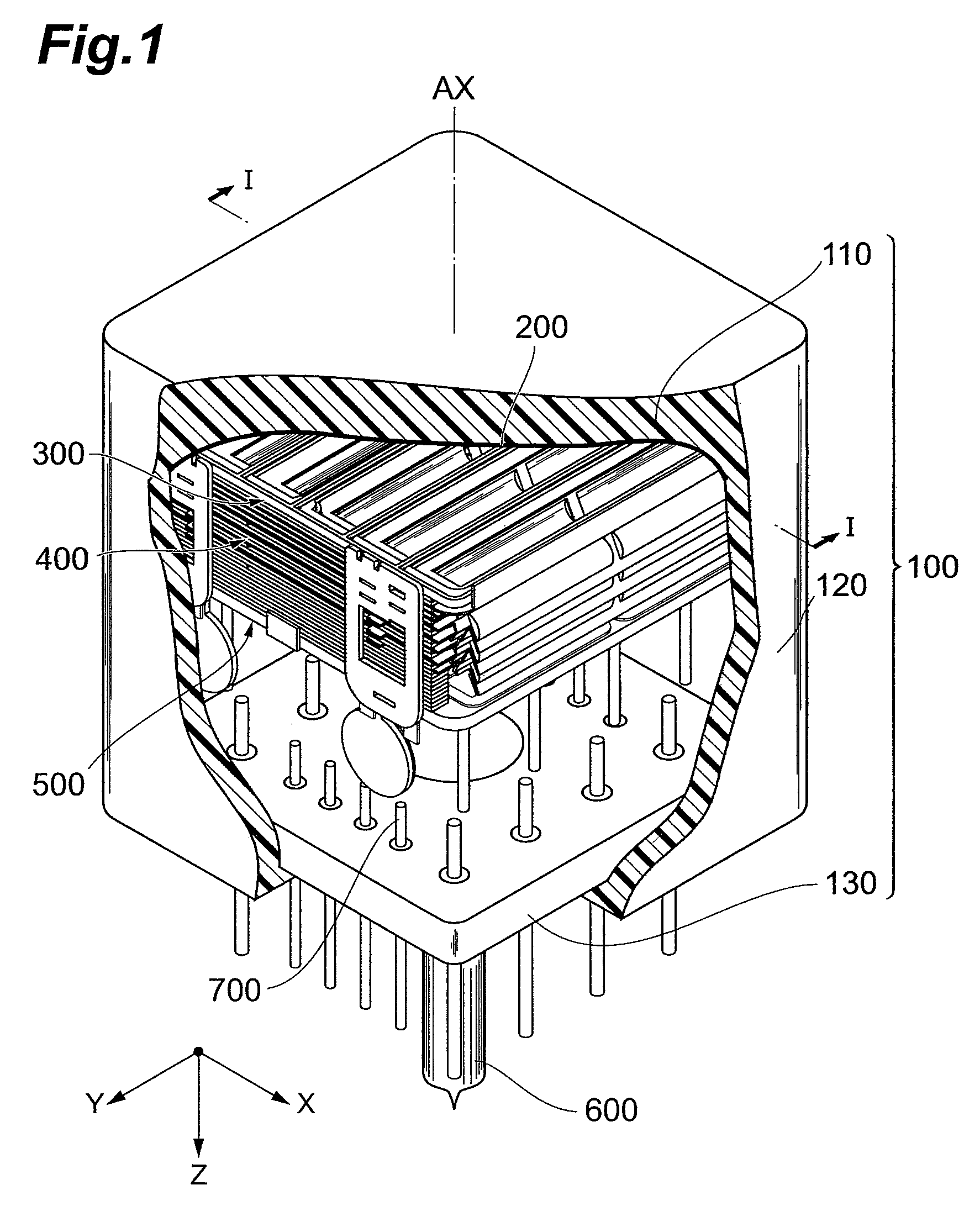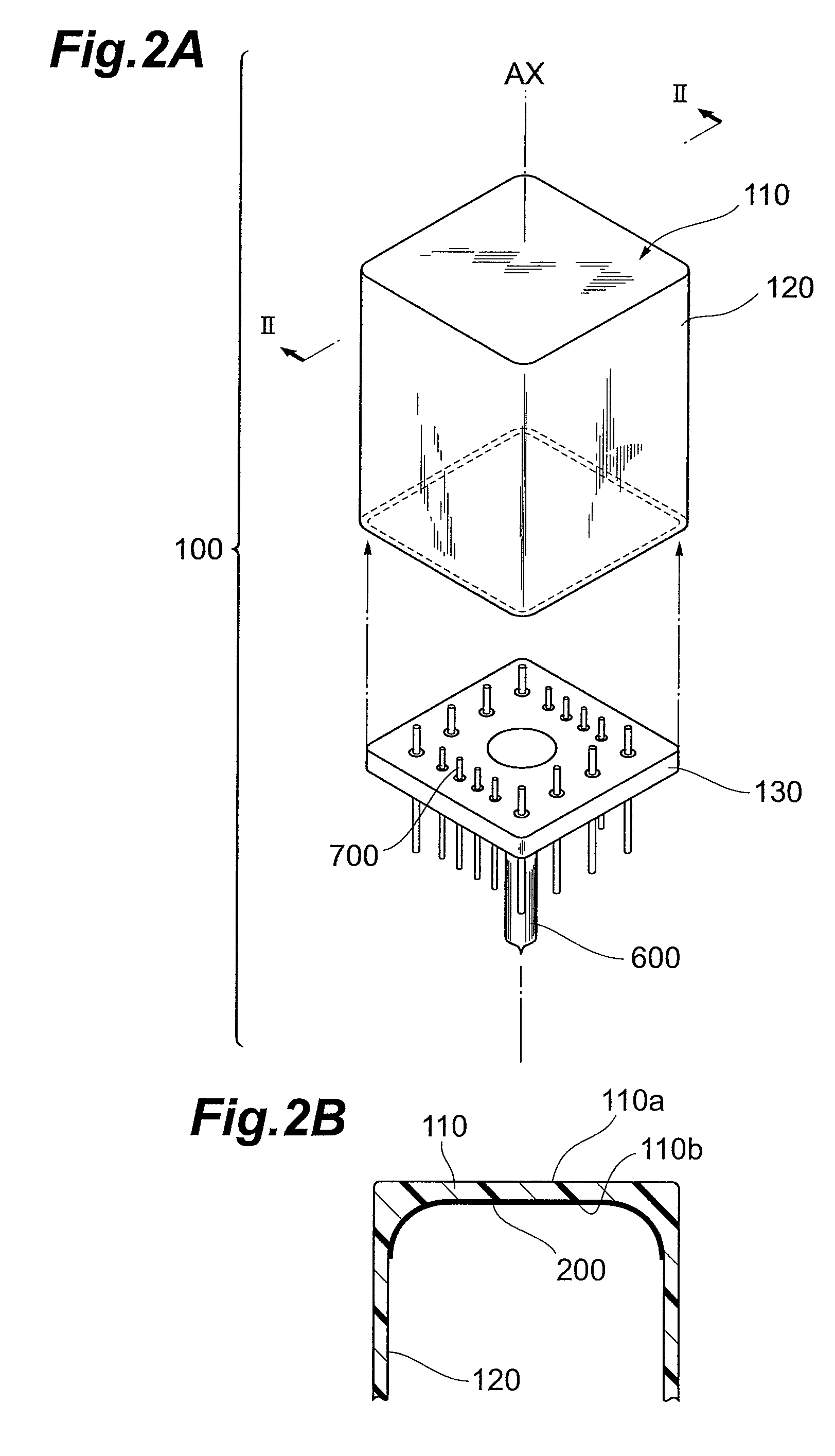Photomultiplier
a multi-channel photomultiplier and electron transit time technology, applied in the field of photomultipliers, can solve the problems that the presence of stray photoelectrons cannot be ignored, and the average electron transit time difference cannot be improved, so as to improve the high-speed response properties of the multi-channel photomultiplier as a whole, reduce and improve the electron transit time difference in each electron multiplier
- Summary
- Abstract
- Description
- Claims
- Application Information
AI Technical Summary
Benefits of technology
Problems solved by technology
Method used
Image
Examples
Embodiment Construction
[0049]In the following, embodiments of a photomultiplier according to the present invention will now be explained in detail with reference to FIGS. 1, 2A and 2B, 3 to 6, 7A to 12B, 13, 14A to 16B, 17, and 18A to 24B, respectively. In the description of the drawings, portions and elements that are the same shall be provided with the same symbol, and overlapping description shall be omitted.
[0050]FIG. 1 is a partially broken-away view of a general configuration of an embodiment of a photomultiplier according to the present invention. FIGS. 2A and 2B are an assembly process diagram and a sectional view for describing a structure of a sealed container in the photomultiplier according to the present invention. FIG. 3 is a diagram of a sectional structure taken on line I-I of the photomultiplier shown in FIG. 1.
[0051]As shown in FIG. 1, the photomultiplier according to the present invention comprises a sealed container 100, having a pipe 600, used to depressurize an interior of the sealed...
PUM
 Login to View More
Login to View More Abstract
Description
Claims
Application Information
 Login to View More
Login to View More - R&D
- Intellectual Property
- Life Sciences
- Materials
- Tech Scout
- Unparalleled Data Quality
- Higher Quality Content
- 60% Fewer Hallucinations
Browse by: Latest US Patents, China's latest patents, Technical Efficacy Thesaurus, Application Domain, Technology Topic, Popular Technical Reports.
© 2025 PatSnap. All rights reserved.Legal|Privacy policy|Modern Slavery Act Transparency Statement|Sitemap|About US| Contact US: help@patsnap.com



